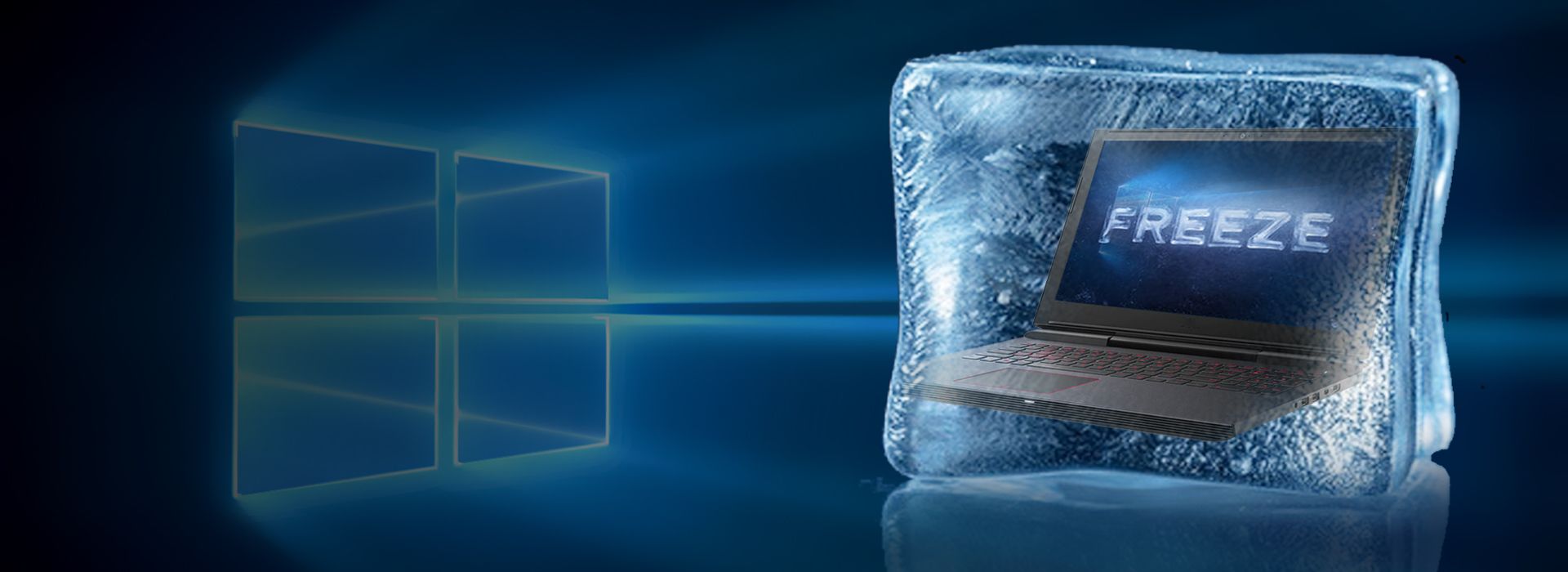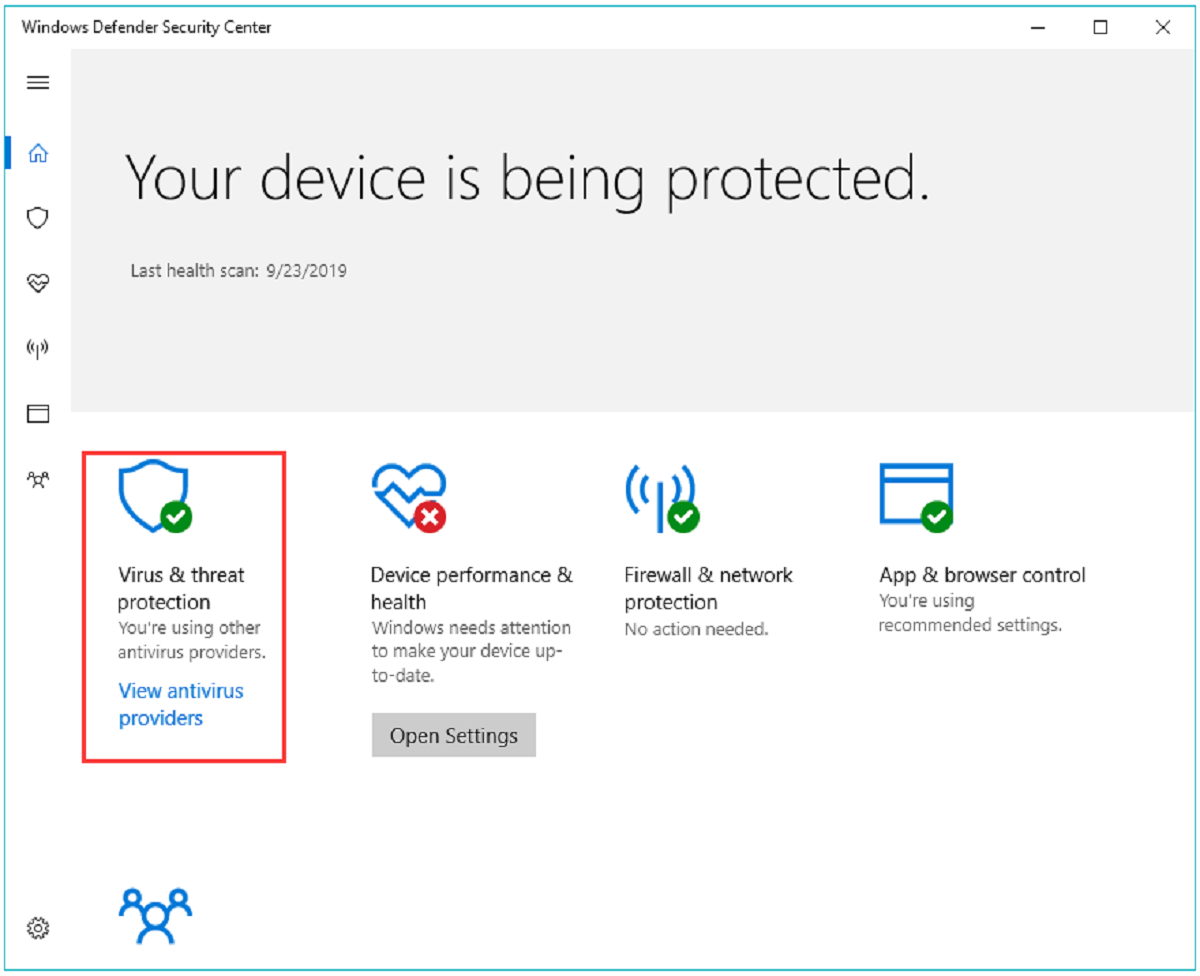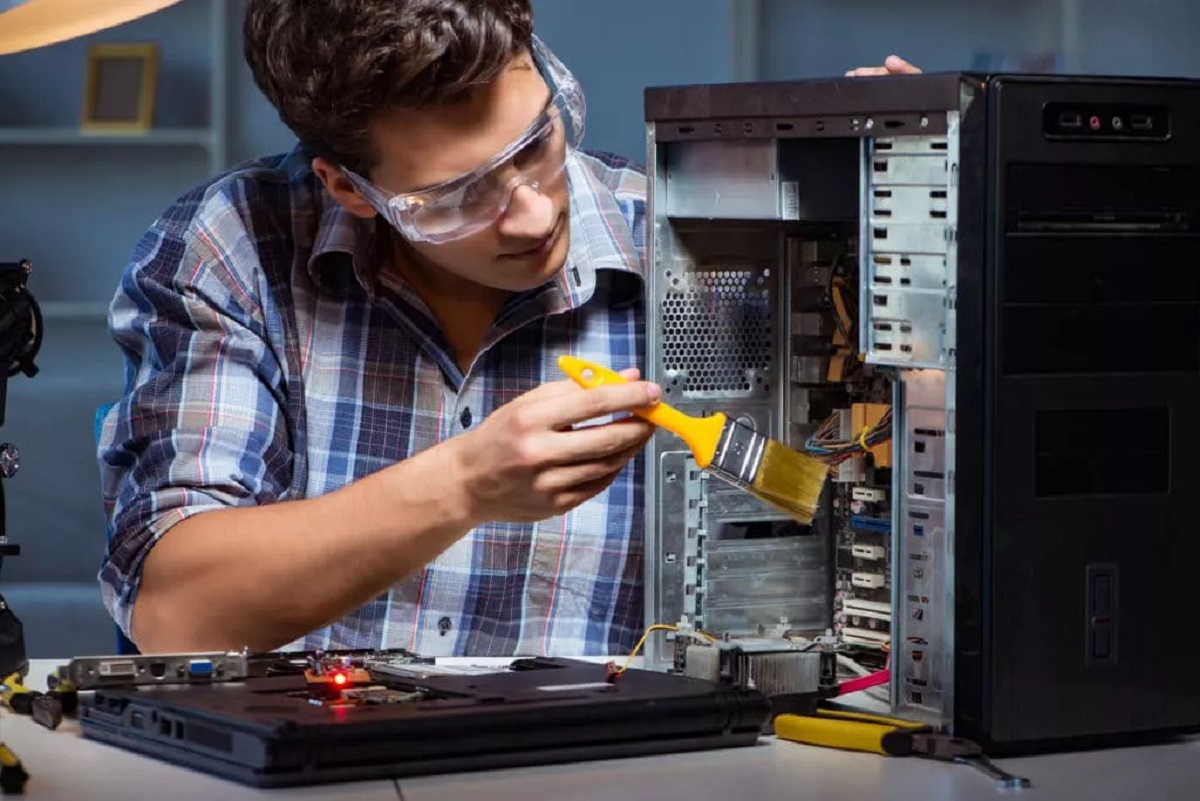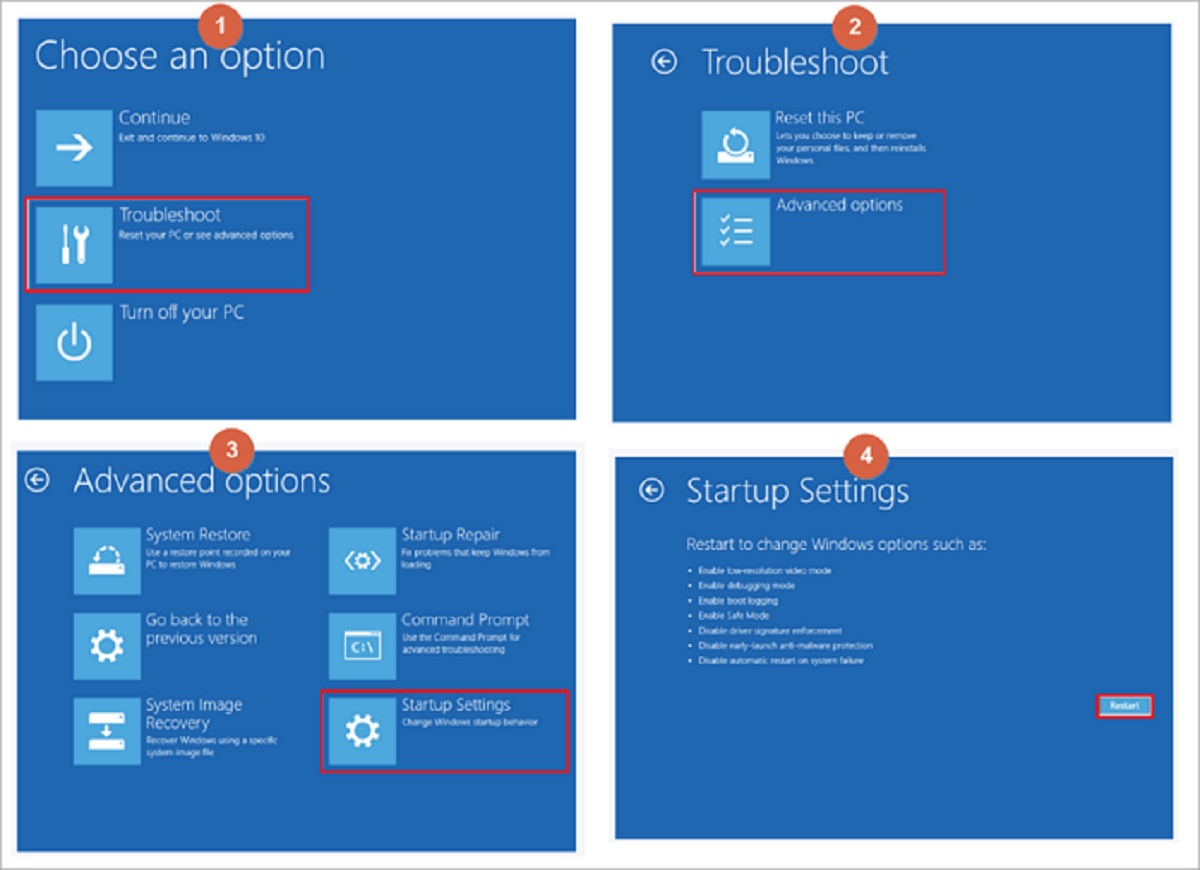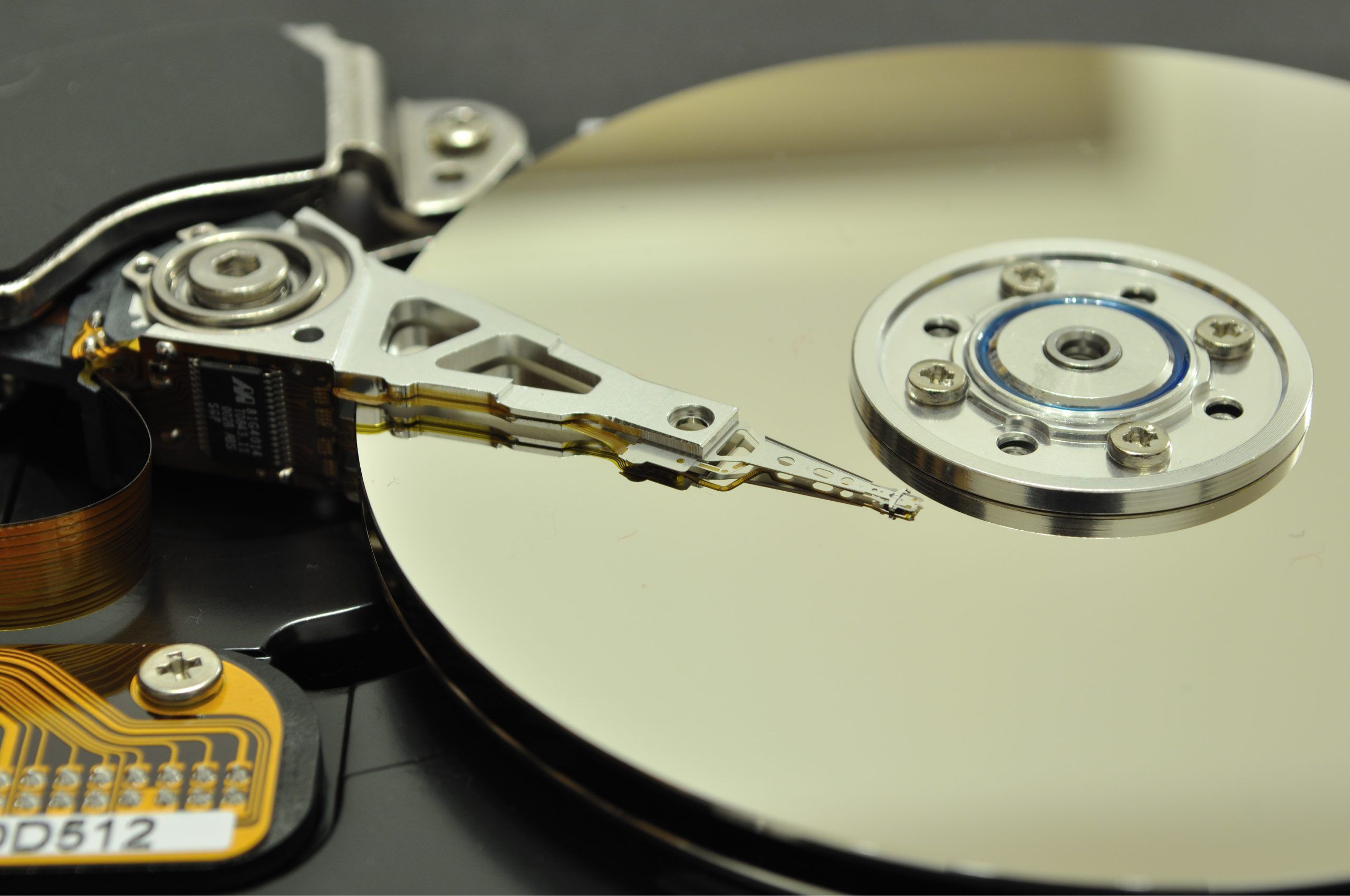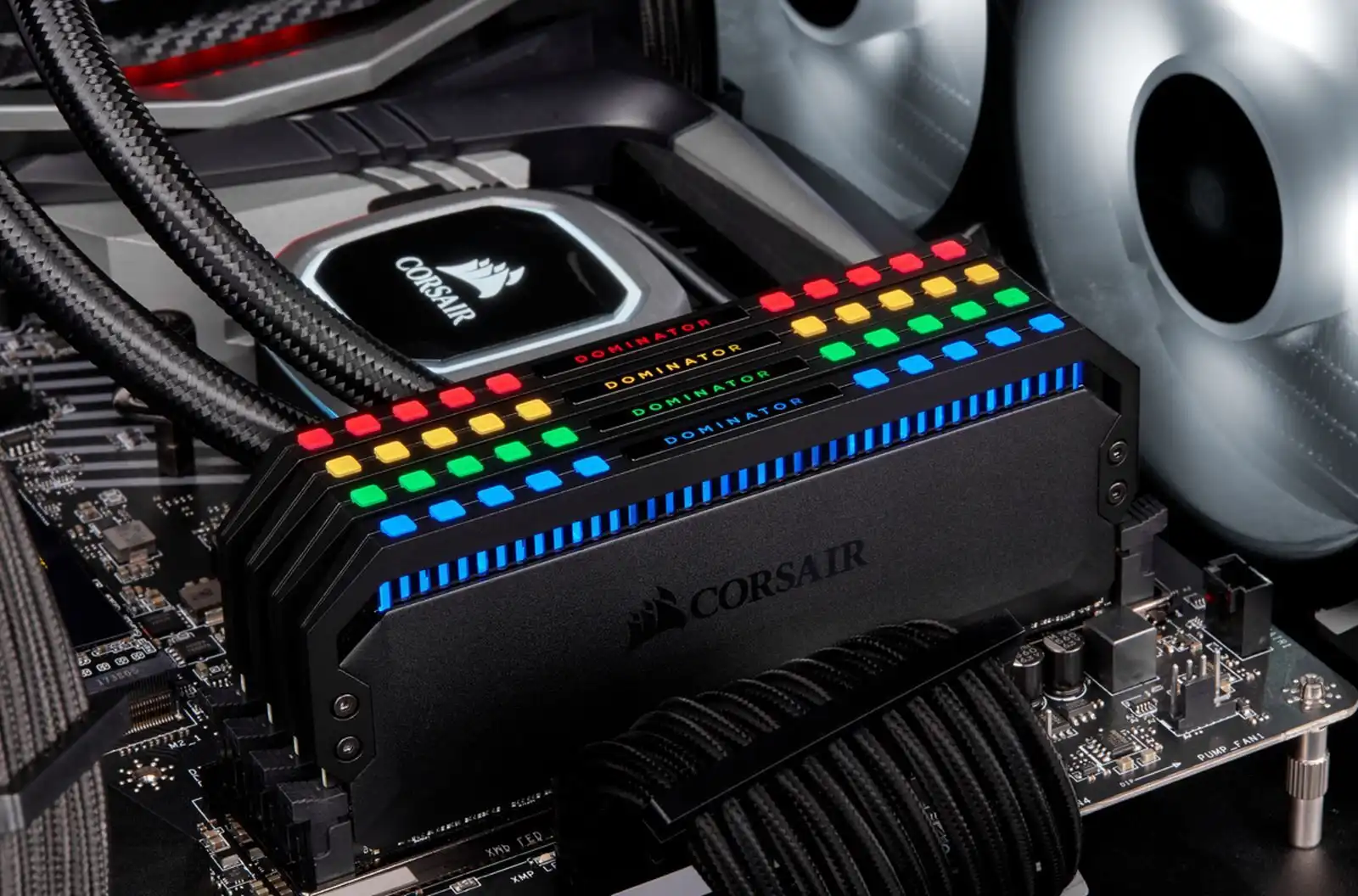Introduction
Dealing with a freezing computer can be incredibly frustrating. Whether you’re in the middle of an important work task or simply browsing the internet, unexpected freezes can disrupt your productivity and leave you feeling helpless. But why does your PC keep freezing?
Understanding the underlying causes of this issue is crucial for finding effective solutions. In this article, we will explore the common reasons why your computer freezes and provide tips on troubleshooting the problem.
Computer freezing can occur due to various factors. It could be a hardware or software-related issue. Overheating, insufficient RAM, outdated drivers, corrupted system files, malware infections, and resource-heavy programs are some of the common culprits behind PC freezes.
When your computer freezes, it means that the screen and all applications stop responding, leaving you unable to perform any tasks. The freeze could be temporary, lasting only a few seconds, or it could be persistent, requiring a forced restart.
Now, let’s dive into the details of each possible cause and explore the steps you can take to troubleshoot and resolve the freezing issue.
Common Causes of PC Freezing
PC freezing can be attributed to several common causes. Understanding these causes can help you identify the root of the problem and find the right solution. Let’s take a closer look at each of these causes:
- Overheating: When your computer components get too hot, they can malfunction and cause your system to freeze. Insufficient cooling, clogged air vents, or a faulty CPU fan can all contribute to overheating.
- Insufficient RAM: If your computer doesn’t have enough RAM to handle the tasks you’re performing, it can lead to freezing. Running memory-intensive programs or having too many applications open simultaneously can exceed your system’s memory capacity and cause freezes.
- Outdated or Incompatible Drivers: Device drivers are essential for the proper functioning of hardware components. Outdated or incompatible drivers can conflict with your operating system, resulting in freezes. It’s important to keep your drivers up to date.
- Corrupted System Files: Over time, system files on your computer can become corrupted or damaged, leading to freezing issues. These files are necessary for your operating system to run smoothly, and when they are compromised, it can result in freezing and other problems.
- Malware Infection: Viruses, spyware, and other forms of malware can wreak havoc on your computer system. They can cause freezes, slow down your system, and compromise your data security. Regularly scanning your computer for malware is essential.
- Resource-Heavy Programs: Some applications and programs consume a significant amount of system resources. When you run multiple resource-heavy programs simultaneously, your computer may struggle to handle the load, leading to freezing.
- Hardware Issues: Faulty hardware components, such as a failing hard drive or a malfunctioning graphics card, can cause your computer to freeze. It’s important to diagnose and address any hardware issues promptly.
By recognizing these common causes, you can take the necessary steps to troubleshoot and resolve the freezing problem on your PC. In the following sections, we will provide you with practical solutions to help you get your computer running smoothly again.
Overheating
One of the leading causes of PC freezing is overheating. When the components of your computer, such as the processor and graphics card, get too hot, they can’t function properly, leading to system freezes. Overheating can occur due to various reasons, including inadequate cooling, clogged air vents, or a malfunctioning CPU fan.
To address overheating issues, you can take the following steps:
- Clean the air vents and fans: Over time, dust and debris can accumulate in the air vents and fans, obstructing airflow and causing overheating. Use compressed air or a soft brush to clean the vents and gently remove any dust or dirt.
- Ensure proper ventilation: Make sure that your computer is placed in a well-ventilated area. Avoid placing it on surfaces that can block airflow, such as soft fabrics or carpets. Consider using a laptop cooling pad or an additional fan to enhance air circulation.
- Check the CPU fan: The CPU fan plays a crucial role in maintaining the temperature of your processor. If it’s not spinning properly or making unusual noises, it may need to be replaced. Consult your computer’s manual or seek professional assistance to address any issues with the fan.
- Monitor temperatures: Install temperature monitoring software to keep an eye on the temperature of your computer components. This can help you identify any overheating patterns and take appropriate action if necessary.
- Consider reapplying thermal paste: In some cases, dried or ineffective thermal paste between the CPU and heatsink can prevent proper heat transfer, leading to overheating. If you’re comfortable with hardware troubleshooting, you can apply new thermal paste or seek assistance from a professional.
By addressing the overheating issue, you can significantly reduce the chances of your computer freezing due to high temperatures. However, if the freezing issue persists, it’s important to explore other potential causes and continue troubleshooting.
Insufficient RAM
Another common cause of PC freezing is insufficient RAM (Random Access Memory). RAM is responsible for temporarily storing data that your computer needs to access quickly. If your computer doesn’t have enough RAM to handle the tasks you’re performing, it can lead to freezing and slowdowns.
Here are a few steps you can take to address insufficient RAM:
- Close unnecessary programs: If you have multiple programs running simultaneously, especially memory-intensive ones like video editing software or games, your RAM can get overwhelmed. Close any unnecessary programs or background processes to free up memory.
- Upgrade your RAM: If your computer is consistently freezing due to insufficient RAM, consider adding more memory. Check your computer’s specifications and determine the maximum amount of RAM it can support. Purchase compatible RAM modules and install them following the manufacturer’s instructions.
- Manage virtual memory settings: Virtual memory allows your computer to use a portion of your hard drive as additional RAM. Adjusting the virtual memory settings can provide temporary relief for RAM-related freezing issues. Right-click on “Computer” or “This PC” and go to “Properties,” then navigate to “Advanced system settings” and click on “Settings” under the “Performance” section. In the “Performance Options” window, click on the “Advanced” tab and under the “Virtual Memory” section, click on “Change.” Uncheck the “Automatically manage paging file size for all drives” option and select “Custom size.” Set the initial and maximum size based on your computer’s specifications.
- Optimize your workflow: If you frequently encounter freezing due to insufficient RAM, it may be time to optimize your workflow. Avoid running memory-intensive programs simultaneously or consider upgrading to a more powerful computer if your work requires it.
By taking these steps, you can alleviate the freezing issues caused by insufficient RAM. However, keep in mind that upgrading your RAM should be done with caution and consideration of your computer’s hardware limitations.
Outdated or Incompatible Drivers
Outdated or incompatible drivers can often be the culprit behind PC freezing issues. Device drivers are software components that allow your operating system to communicate with hardware devices, such as your graphics card, sound card, or network adapter. When these drivers are outdated or incompatible with your system, they can cause conflicts and lead to freezing.
To address driver-related freezing problems, follow these steps:
- Check for driver updates: Visit the manufacturer’s website for each hardware component and check if there are any available driver updates. Look for updates specific to your operating system version and hardware model. Download and install the latest drivers for each device.
- Use driver update software: If manually updating drivers seems overwhelming, you can use driver update software to automate the process. These tools can scan your system, identify outdated or incompatible drivers, and download the appropriate updates automatically.
- Uninstall and reinstall problematic drivers: If you’ve recently installed a new driver and started experiencing freezing issues, it could be due to a compatibility problem. Roll back to the previous driver version or uninstall the problematic driver completely and reinstall a compatible version.
- Update BIOS: The Basic Input/Output System (BIOS) plays a crucial role in your computer’s startup process and hardware configuration. An outdated or corrupt BIOS can cause various issues, including freezing. Consult your computer or motherboard manufacturer’s website for instructions on updating the BIOS.
- Perform a clean boot: Sometimes, third-party software or services can interfere with system processes and cause freezing. Perform a clean boot to start Windows with only essential services and startup programs. This will help you determine if any software conflicts are causing the freezing problem.
By ensuring that your drivers are up to date and compatible with your system, you can minimize the chance of freezing due to driver-related issues. Regularly checking for updates and addressing any compatibility problems is essential for maintaining a stable and reliable computer.
Corrupted System Files
Corrupted system files can cause a range of problems on your computer, including freezing. System files are essential for the smooth operation of your operating system, and when they become damaged or corrupted, it can result in various issues, including freezing and crashes.
To address freezing caused by corrupted system files, you can follow these steps:
- Run System File Checker (SFC) scan: SFC is a built-in Windows tool that scans your system for corrupted or missing system files. To run an SFC scan, open the Command Prompt as an administrator and type “sfc /scannow.” The tool will then scan your system and replace any corrupted files with the correct versions.
- Use DISM tool: The Deployment Image Servicing and Management (DISM) tool can be used in conjunction with the SFC tool to repair system files. Open the Command Prompt as an administrator and run the following command: “DISM /Online /Cleanup-Image /RestoreHealth”. This will scan your system and repair any issues with the system files.
- Perform a system restore: If you recently started experiencing freezing issues and suspect that it’s due to corrupted system files, you can try performing a system restore. This will revert your computer’s settings and system files to a previous state where the freezing was not occurring.
- Repair Windows installation: If other methods fail to resolve the freezing problem caused by corrupted system files, you may need to consider repairing your Windows installation. This can be done using the Windows installation media or recovery options provided by your computer manufacturer.
Addressing corrupted system files can help eliminate freezing issues and restore the stability of your computer. It’s important to regularly scan and repair system files to prevent future problems and maintain the overall health of your operating system.
Malware Infection
Malware, including viruses, spyware, and other malicious software, can cause a range of problems on your computer, including freezing. Malware infections can compromise the security and stability of your system, leading to unexpected freezes and slowdowns.
To address freezing caused by malware infections, you can follow these steps:
- Install reputable antivirus software: Ensure that you have reliable antivirus software installed on your computer. Update it regularly and perform full system scans to detect and remove any malware infections.
- Scan for malware: In addition to regular antivirus scans, it’s a good practice to run periodic scans using standalone malware removal tools. These tools can often detect and remove malware that may have been missed by traditional antivirus software.
- Enable real-time protection: Make sure that your antivirus software is set to provide real-time protection. This feature actively monitors your system for any suspicious activity or incoming threats, helping to prevent malware infections that can lead to freezing.
- Stay vigilant online: Be cautious when browsing the internet, downloading files, or opening email attachments. Avoid visiting suspicious or untrustworthy websites and only download files from trusted sources to minimize the risk of malware infections.
- Keep your operating system and software up to date: Regularly update your operating system, web browser, and other software applications. These updates often include patches and security fixes that can protect your system from known vulnerabilities exploited by malware.
- Practice safe computing habits: Be mindful of phishing attempts, avoid clicking on suspicious links, and be wary of downloading freeware or shareware from unverified sources. Educate yourself about common online threats and adopt safe computing practices to minimize the risk of malware infections.
By implementing these measures, you can significantly reduce the chances of malware-related freezing issues and protect your computer from further infections. It’s important to prioritize regular malware scans and maintain a proactive approach to ensure the security and stability of your system.
Resource-Heavy Programs
Running resource-heavy programs simultaneously can put a strain on your computer’s resources, leading to freezing. These programs, such as video editing software, games, or virtual machines, demand a significant amount of CPU, RAM, and graphics processing power. When your computer is unable to handle the load, freezing can occur.
To address freezing caused by resource-heavy programs, consider the following steps:
- Close unnecessary programs: If you’re experiencing freezing while running resource-intensive programs, close any unnecessary programs or background processes. This will free up system resources for the program that requires them the most.
- Manage startup programs: Some programs automatically launch when you start your computer, consuming valuable resources from the get-go. Use the Task Manager or a third-party startup manager to disable or delay the startup of non-essential programs, freeing up system resources.
- Use task manager to identify resource hogs: Open the Task Manager and go to the “Processes” or “Details” tab (depending on your operating system). Look for programs that are consuming a significant amount of CPU, memory, or disk usage. If feasible, close or uninstall these programs, or reduce their resource usage settings.
- Upgrade your hardware: If you frequently use resource-heavy programs and encounter freezing issues, it may be time to consider upgrading your hardware. Adding more RAM, upgrading your CPU or graphics card, or switching to a solid-state drive can improve your computer’s ability to handle demanding applications.
- Adjust program settings: Within resource-intensive programs, there are often settings that allow you to adjust their resource usage. Look for options to lower graphics settings, reduce background processes, or optimize performance to make the program more compatible with your computer’s resources.
By managing resource-heavy programs and optimizing your computer’s resources, you can mitigate freezing issues caused by high resource usage. It’s important to strike a balance between the programs you need to run and the limitations of your computer’s hardware capabilities.
Hardware Issues
Hardware issues can often be the underlying cause of PC freezing problems. Faulty or malfunctioning hardware components can disrupt the normal functioning of your computer and lead to freezes. It’s important to diagnose and address these hardware issues to restore stability to your system.
To troubleshoot freezing caused by hardware issues, consider the following steps:
- Check for loose connections: Ensure that all cables and connections inside your computer are secure. Loose connections can cause intermittent freezes and disruptions in data flow. Reconnect any loose cables and make sure they are properly seated.
- Test your RAM: Faulty RAM modules can cause freezing issues. Use a diagnostic tool, such as Memtest86, to test your RAM for errors. If errors are detected, try replacing the faulty RAM module or seek professional assistance.
- Run a hard drive diagnostic: A failing hard drive can cause freezing and other system issues. Use a diagnostic tool provided by the hard drive manufacturer to scan for errors and perform necessary repairs or replacements if required.
- Check the power supply: Insufficient or unstable power supply can lead to freezing problems. Ensure that your power supply is functioning properly and providing adequate power to all components. Consider using a power supply tester or consult a technician if you suspect power supply issues.
- Monitor CPU and GPU temperatures: Excessive heat generated by the CPU or graphics card can lead to freezing. Use temperature monitoring software to check if your components are running within safe temperature ranges. If temperatures are too high, ensure that your cooling system is functioning optimally and clean out any dust or debris from the cooling fans.
- Test other hardware components: If freezing persists, consider testing other hardware components, such as the motherboard, graphics card, or network adapter. Consult the manufacturer’s documentation or seek professional assistance for specific troubleshooting steps.
By addressing hardware issues and ensuring that all components are functioning properly, you can minimize freezing problems and improve the overall stability of your computer. If you’re unsure about how to diagnose or fix hardware issues, it’s recommended to consult a professional technician for assistance.
How to Troubleshoot PC Freezing
Experiencing PC freezing can be frustrating, but there are several troubleshooting steps you can take to identify and resolve the issue. By following these steps, you can narrow down the cause of the freezing and implement the appropriate solutions:
- Check for overheating: Monitor the temperature of your CPU and graphics card to ensure they are within safe ranges. Clean the air vents, ensure proper ventilation, and check CPU fan functionality to prevent overheating.
- Upgrade RAM: Insufficient RAM can lead to freezing. Consider upgrading your RAM or closing unnecessary programs to free up memory.
- Update drivers: Outdated or incompatible drivers can cause conflicts and freezing. Check for driver updates on manufacturer websites or use driver update software to keep your drivers up to date.
- Scan for malware: Run a reputable antivirus scan to detect and remove any malware infections that could be causing freezing issues.
- Repair corrupted system files: Use the System File Checker (SFC) and Deployment Image Servicing and Management (DISM) tools to scan and repair corrupted system files.
- Optimize startup programs: Disable unnecessary programs from launching at startup to prevent resource overload and freezing.
- Run hardware diagnostics: Test hardware components such as RAM, hard drive, and CPU to identify any faulty hardware that may be causing freezing problems.
By systematically addressing each potential cause, you can troubleshoot and resolve PC freezing. It’s important to implement one step at a time and test your computer’s stability after each solution. If freezing persists, consider seeking professional assistance or consulting online forums for further advice.
Check for Overheating
One of the common causes of PC freezing is overheating. When the components of your computer, such as the CPU and graphics card, get too hot, they can’t function properly, leading to system freezes. Overheating can occur due to various reasons, including inadequate cooling, clogged air vents, or a malfunctioning CPU fan.
To check for overheating and address the issue, you can take the following steps:
- Clean the air vents and fans: Dust and debris can accumulate in the air vents and fans over time, obstructing airflow and causing overheating. Use compressed air or a soft brush to clean the vents and gently remove any dust or dirt.
- Ensure proper ventilation: Make sure your computer is placed in a well-ventilated area. Avoid placing it on surfaces that can block airflow, such as soft fabrics or carpets. Consider using a laptop cooling pad or an additional fan to enhance air circulation.
- Check the CPU fan: The CPU fan plays a crucial role in maintaining the temperature of your processor. If it’s not spinning properly or making unusual noises, it may need to be replaced. Consult your computer’s manual or seek professional assistance to address any issues with the fan.
- Monitor temperatures: Install temperature monitoring software to keep an eye on the temperature of your computer components. This can help you identify any overheating patterns and take appropriate action if necessary.
- Consider reapplying thermal paste: In some cases, dried or ineffective thermal paste between the CPU and heatsink can prevent proper heat transfer, leading to overheating. If you’re comfortable with hardware troubleshooting, you can apply new thermal paste or seek assistance from a professional.
Checking for overheating is an important step in troubleshooting PC freezing issues. By addressing overheating problems, you can significantly reduce the chances of your computer freezing due to high temperatures. However, if the freezing issue persists, it’s important to explore other potential causes and continue troubleshooting.
Upgrade RAM
Insufficient RAM (Random Access Memory) can often be a culprit behind PC freezing issues. RAM is responsible for temporarily storing data that your computer needs to access quickly. If your computer doesn’t have enough RAM to handle the tasks you’re performing, it can lead to freezing, slowdowns, and overall system instability.
If you suspect that inadequate RAM is causing your PC to freeze, upgrading your RAM can be an effective solution. Here’s what you can do:
- Determine the RAM capacity: Check how much RAM your computer currently has by going to the System Information or Task Manager. Note the capacity of the installed RAM modules.
- Check compatibility: Verify what type and speed of RAM your computer supports. You can usually find this information in the computer’s manual or by visiting the manufacturer’s website. Ensure that any new RAM modules you purchase are compatible with your motherboard and other hardware components.
- Purchase and install new RAM: Once you know the type and capacity of RAM your computer supports, you can purchase the appropriate RAM modules. Install the new RAM by carefully opening your computer’s casing, locating the RAM slots on the motherboard, and inserting the new modules according to the manufacturer’s instructions.
- Restart and test: After installing the new RAM, restart your computer and check if the freezing issue persists. With the additional RAM, your computer should be able to handle more tasks without experiencing freezes caused by insufficient memory.
Upgrading your RAM can significantly improve your computer’s performance and alleviate freezing issues caused by limited memory. If you frequently run memory-intensive programs, multitask, or work with large files, upgrading your RAM is highly recommended. However, keep in mind that there may be hardware limitations in terms of the maximum amount of RAM your system can support.
Update Drivers
Outdated or incompatible drivers can often cause conflicts and lead to PC freezing issues. Device drivers are essential software components that allow your operating system to communicate with hardware devices, such as your graphics card, sound card, or network adapter. Keeping your drivers up to date is crucial for the smooth and stable functioning of your computer.
If you suspect that outdated or incompatible drivers are causing your PC to freeze, here’s what you can do to update them:
- Identify the drivers: Determine which drivers may be the potential cause of freezing. Start with critical drivers like the graphics card, sound card, and network adapter. You can usually find the driver information in the Device Manager or by visiting the manufacturer’s website for each respective hardware component.
- Visit the manufacturer’s website: Go to the official website of each hardware component’s manufacturer and navigate to the support or downloads section. Look for driver updates specifically tailored to your operating system version and hardware model.
- Download and install the updates: Download the latest driver versions offered by the manufacturer. Be cautious to download drivers only from reputable sources to avoid installing potentially harmful software. Run the installer and follow the instructions provided to update the drivers.
- Use driver update software: If manually updating drivers seems overwhelming, you can use driver update software. These tools can scan your system, detect outdated or incompatible drivers, and automatically download and install the correct updates for you.
- Uninstall and reinstall problematic drivers: If you recently updated a driver and started experiencing freezing issues, it could be due to compatibility problems. Roll back to the previous driver version or uninstall the problematic driver completely. Then, visit the manufacturer’s website and download an older, stable version of the driver.
Regularly updating your drivers is essential for optimal system performance and stability. By keeping your drivers up to date, you can reduce the likelihood of freezing problems caused by outdated or incompatible drivers. Remember to always download drivers from trusted sources and carefully follow the installation instructions provided by the manufacturer.
Scan for Malware
Malware infections can wreak havoc on your computer and lead to various issues, including freezing. Malware, such as viruses, spyware, and other malicious software, can compromise your system’s security, disrupt normal operations, and cause unexpected freezes and slowdowns. Performing regular malware scans is crucial for maintaining the integrity and stability of your PC.
If you suspect that malware is causing your PC to freeze, here’s how you can scan for and remove malware:
- Install reputable antivirus software: Ensure that you have trusted antivirus software installed on your computer. Choose a reputable product and keep it updated with the latest virus definitions.
- Perform a full system scan: Open your antivirus software and run a full system scan. This will thoroughly examine your computer for any malware infections.
- Use standalone malware removal tools: In addition to antivirus software, consider using standalone malware removal tools for an extra layer of protection. These tools can often detect and remove malware that may be missed by traditional antivirus programs.
- Keep your antivirus software and malware removal tools updated: Regularly update your antivirus software and malware removal tools to ensure that you have the latest protection against emerging malware threats.
- Stay vigilant online: Be cautious when browsing the internet, downloading files, or opening email attachments. Avoid visiting suspicious or untrustworthy websites and only download files from trusted sources. Be wary of phishing attempts and exercise caution to prevent malware infections.
- Perform periodic scans: Schedule regular scans with your antivirus software to proactively detect and remove any malware that may have infected your system.
By scanning for malware regularly, you can detect and remove any malicious software that may be causing your PC to freeze. Remember to keep your antivirus software and malware removal tools up to date to stay protected against the latest threats. If freezing issues persist after scanning and removing malware, further troubleshooting may be required.
Repair Corrupted System Files
Corrupted system files can lead to a variety of issues on your computer, including freezing. System files are vital for the proper functioning of your operating system, and when they become damaged or corrupted, it can result in instability and freezing problems. Repairing these files is crucial to restore the smooth operation of your PC.
To repair corrupted system files, you can follow these steps:
- Use the System File Checker (SFC) tool: The SFC tool is a built-in Windows utility that scans your system for corrupted or missing system files and replaces them with known good versions. Open the Command Prompt as an administrator and type “sfc /scannow” and press Enter. The tool will then scan your system and repair any corrupted files.
- Use the Deployment Image Servicing and Management (DISM) tool: DISM is another command-line tool that can be used to repair corrupted system files. Open the Command Prompt as an administrator and run the command “DISM /Online /Cleanup-Image /RestoreHealth”. The tool will scan your system and restore any missing or corrupted files from the Windows update source.
- Perform a System Restore: If you recently started experiencing freezing issues, performing a System Restore can revert your computer’s settings and system files to a previous known good state. Access the System Restore option in the Control Panel or the Settings app and choose a restore point prior to the onset of freezing problems.
- Repair Windows installation: If other methods fail to fix the freezing issue caused by corrupted system files, you may need to consider repairing your Windows installation. This can be done using the Windows installation media or recovery options provided by your computer manufacturer. Follow the on-screen instructions to repair your Windows installation without losing personal data.
By repairing corrupted system files, you can eliminate freezing problems caused by file corruption and restore the stability of your computer. Regularly scanning and repairing system files is essential for the optimal performance and reliability of your operating system.
Optimize Startup Programs
Having a long list of unnecessary programs launching at startup can significantly impact your computer’s performance and contribute to freezing issues. When too many programs load during startup, system resources get overloaded, resulting in sluggishness and potential freezes. Optimizing your startup programs can help alleviate these problems and improve overall system responsiveness.
Here are some steps to optimize startup programs:
- Review startup programs: Open the Task Manager on Windows or Activity Monitor on macOS and navigate to the Startup tab. Identify the programs that are set to load during startup.
- Disable unnecessary programs: Disable or remove programs from the startup list that you don’t need to launch automatically. Right-click on the program’s entry and choose the option to disable or remove it from startup.
- Use a dedicated startup manager: Consider using third-party software that specializes in managing startup programs. These tools provide a more comprehensive view of startup items and allow you to easily enable, disable, or delay their launch.
- Delay startup of non-essential programs: For programs that you don’t need to run immediately, you can delay their startup. This allows your computer to prioritize crucial system processes during bootup, reducing the strain on resources.
- Regularly review and update startup programs: Periodically reassess your startup programs to ensure they are still necessary. Uninstall any programs you no longer use or require. Additionally, some programs may re-enable themselves on startup, so it’s important to review the list periodically.
By optimizing your startup programs, you can reduce the workload on your computer during bootup and improve its performance. This, in turn, can help minimize freezing issues and provide a smoother computing experience. Take care to disable only non-essential programs to ensure vital system processes continue to run smoothly.
Run Hardware Diagnostics
When dealing with PC freezing issues, it is important to consider the possibility of hardware problems. Faulty hardware components can disrupt the normal functioning of your computer and lead to freezing. Running hardware diagnostics can help identify any underlying hardware issues and allow you to take the necessary steps to address them.
Here’s how you can run hardware diagnostics to troubleshoot freezing problems:
- Check manufacturer diagnostics: Many computer manufacturers provide diagnostic tools specific to their hardware. Visit the support section of the manufacturer’s website and search for diagnostic tools for your specific model. Download and run these tools to perform thorough hardware tests.
- Memtest86 for RAM testing: Use Memtest86, a popular third-party tool, to test your RAM for any errors or faults. Create a bootable USB drive with Memtest86, restart your computer, and boot from the USB drive. Let the tool run through several passes to detect any memory-related issues.
- Hard drive diagnostics: Most hard drive manufacturers also provide diagnostic software to test the health of their drives. Download and run the appropriate diagnostic tool for your hard drive to check for any errors, bad sectors, or other issues that could be causing freezing.
- CPU and GPU stress tests: Stress testing tools like Prime95 and FurMark can help determine if your CPU or graphics card is causing freezing problems. These tools put heavy loads on these components, and if your system freezes or crashes during the stress test, it could indicate a hardware issue.
- Check other hardware components: If necessary and if you are comfortable with hardware troubleshooting, consider inspecting other hardware components such as the motherboard, power supply, or network adapter. Look for any visible signs of damage or overheating and address any issues accordingly.
Running hardware diagnostics allows you to pinpoint and identify any faulty hardware components that might be responsible for the freezing issues. Depending on the results, you can take the appropriate steps, whether it’s replacing a faulty component, seeking professional assistance, or considering a hardware upgrade.
Conclusion
Experiencing PC freezing can be a frustrating and disruptive issue, but understanding the common causes and troubleshooting methods can help you resolve the problem. Overheating, insufficient RAM, outdated or incompatible drivers, corrupted system files, malware infections, resource-heavy programs, and hardware issues are all potential culprits behind freezing.
By taking appropriate steps, such as cleaning air vents, upgrading RAM, updating drivers, scanning for malware, repairing corrupted system files, optimizing startup programs, and running hardware diagnostics, you can effectively troubleshoot and address freezing problems. It’s essential to approach troubleshooting systematically, trying one solution at a time and testing the computer’s stability before moving on to the next step.
Remember to prioritize preventative measures as well, such as regularly cleaning your computer, staying vigilant against malware, keeping your software up to date, and maintaining good computing habits. These practices can help prevent freezing issues in the first place and ensure the overall health and performance of your system.
If you are unsure about any troubleshooting steps or facing persistent freezing issues, it is always recommended to seek the assistance of a professional technician who can provide further guidance and support.







